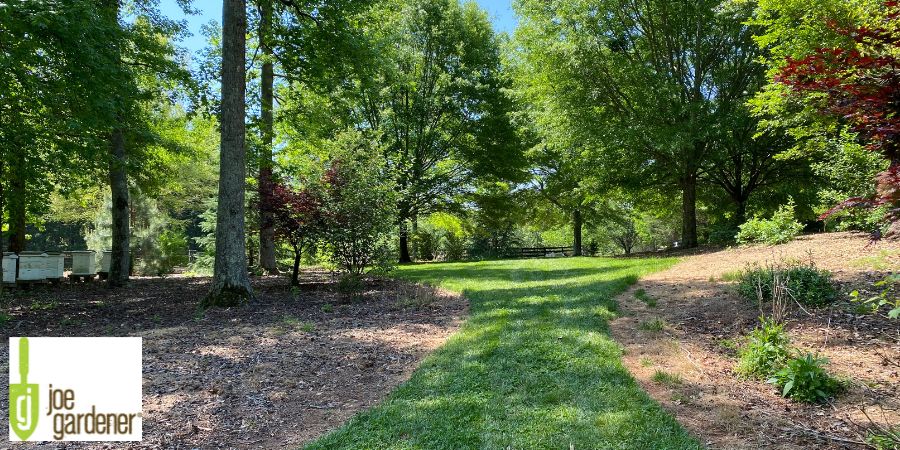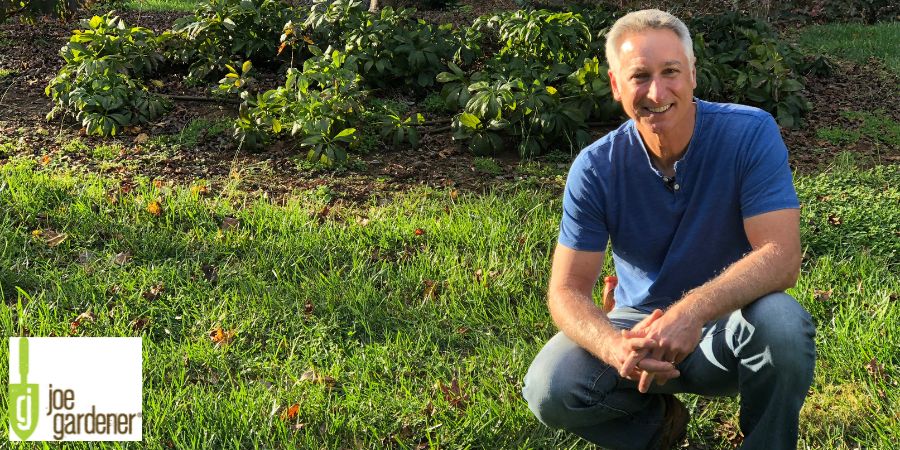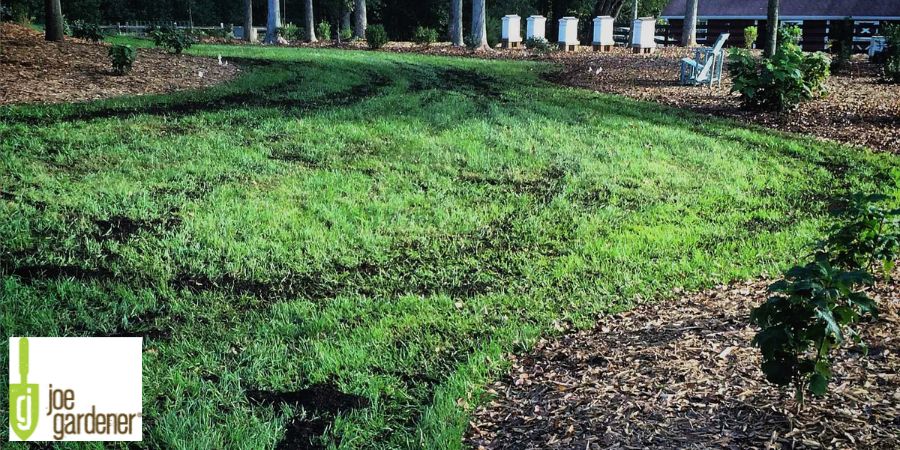7 Steps to Green Your Lawn this Fall
- Gardening Expert and Host of Growing a Greener World®September 3, 2022
Summer heat and drought take their toll on lawns, especially lawns made up of cool-season grasses like fescue and bluegrass, but fall offers the opportunity to turn your lawn around.
Fall is prime time to green up your lawn and keep it looking good for seasons to come. These are my seven proven steps to renovating a lawn successfully.

One: Limb Up Trees
If areas of your lawn that once thrived have lost their luster, the culprit could be shade. As landscape trees grow taller and expand their canopies, they block out light to grass that formerly enjoyed full sun.
The simple solution is to limb up trees that are casting too much shade. Limbing up, or “raising the crown,” means removing the lowest branches. You can do this yourself if you are careful and the trees aren’t too big, or you can hire professionals. The small investment to bring in a trained arborist is worth it for the results you’ll see.
Two: Clear the Deck & Dethatch
Before putting down fertilizer and new grass seed, it’s important to dethatch — what I like to call “clearing the deck.” Thatch is that layer of dead grass and buildup that makes it hard for water and nutrients to penetrate the lawn and for seed to make the soil contact that’s necessary for germination. Dethatching also improves aeration, which reduces compaction.
One of the best ways to dethatch only requires a good, stiff rake. Go along the surface in forceful strokes to get all the tough thatch loose. This takes work — but it’s great exercise and very effective. You can rake the debris into a pile, or better yet, go over the lawn with a mower that has a bagging attachment. All of that organic material you get out of the lawn will make a great addition to your compost pile.
Clearing the deck is the one time you want to get the grass cut down real low. Normally, grass should be cut to the highest end of the species’ preferred range, but since you’re preparing to overseed, the lower the better. For example, fescue prefers a height of three inches, but to prepare for a lawn renovation, I cut it down to one and a half inches.
Three: Aerate Your Lawn
For better aeration, you can use a core aerator. This isn’t an absolutely necessary step, but it does make a difference. A core aerator works by pulling plugs of grass and soil out of the turf, which allows water, fertilizer and oxygen to get to the turf’s roots. It also gives the roots room to expand.
There are manual aerators and ride-on aerators, or you can rent a push-style aerator from a home improvement store or equipment and tool rental company. If you have ever pushed a lawn mower, you can use this aerator. Make two passes: one going north and south and the second going east and west.
The extracted cores can be left in place; they will break down in a day or two.

Four & Five: Apply Seed and Fertilizer this Fall
Grass seed and fertilizer should be put down one after the other, though the order doesn’t matter. What is important is following the correct application rates. The grass seed package will state how much to apply per square inch of soil for an overseeding application. The fertilizer package will likewise include application rates.
The biggest mistake is assuming that if some is good, more is better. Grass seed applied too densely will clamor for water and nutrients and never be satisfied.
When choosing lawn fertilizer, look at the N-P-K ratio on the bag. Those letters are the periodic table symbols for nitrogen, phosphorus and potassium. You want a fertilizer that has more nitrogen than anything else, so make sure the first number is the highest of the three. Nitrogen is the macronutrient that is the biggest contributor to greening up your grass.
Fertilizer instructions often call for making two passes. Once again, do one north-south pass and one east-west pass, walking at a steady pace, to ensure full coverage.
When choosing a lawn fertilizer, I pick organic over chemical products. Water-soluble chemical fertilizers can easily cause nitrogen burn, and whatever nutrients that the grass doesn’t take up can run off and pollute water bodies. An organic, slow-release fertilizer like Milorganite works in concert with soil microbes to make nutrients available to the grass as it needs them.
Six: Topdress Your Lawn with Compost or Topsoil
During lawn renovation, the icing on the cake is a topdressing of compost or topsoil. A light application covers the fertilizer and seed and helps fill in the voids left by the core aerator with additional organic nutrients. Compost or topsoil will also help the lawn retain moisture between waterings and will support beneficial microbial activity in the lawn.

If you have a lot of lawn like me, you may want to splurge and rent a mechanical spreader for the day. Otherwise, you can pick up the compost one shovelful at a time and shake the shovel lightly to distribute it over the turf.
Seven: Water, Water, Water
The final step is one you absolutely can’t skip: Watering.
If you have an in-ground irrigation system installed, you’re already on your way. Otherwise, you’ll need sprinklers and will benefit from an automatic, battery-powered timer. The timer will turn the sprinkler on and off twice a day to keep the grass seed moist but not soaking wet, and you won’t have to worry about remembering to do it yourself. It can take seven to 14 days for grass seed to germinate, and it would be unrealistic to expect you to take four trips to the spigot daily.
If you didn’t topdress with compost or topsoil, you can protect the grass seed by applying seeding straw. This light mulch will keep the seed from drying out between waterings, and it has the added benefit of cutting down on how many seeds are lost to foraging birds.
Once the seeds have germinated, resist the urge to mow for at least three weeks. You want the grass to have a chance to grow strong roots, and you want the blades to be long enough to achieve good photosynthesis.

